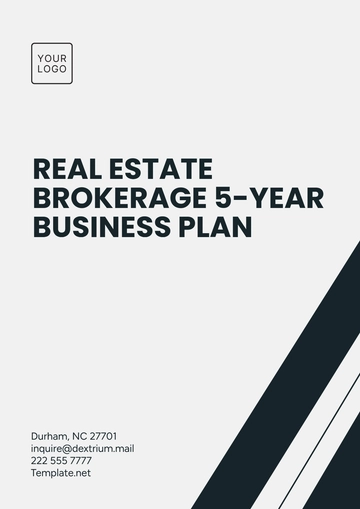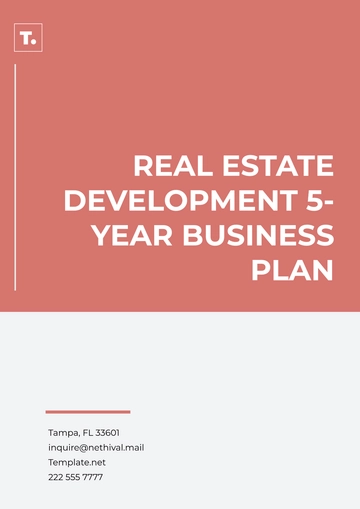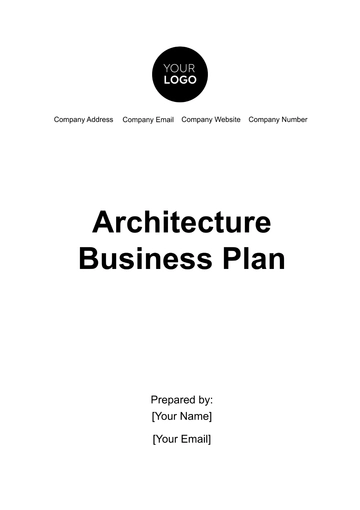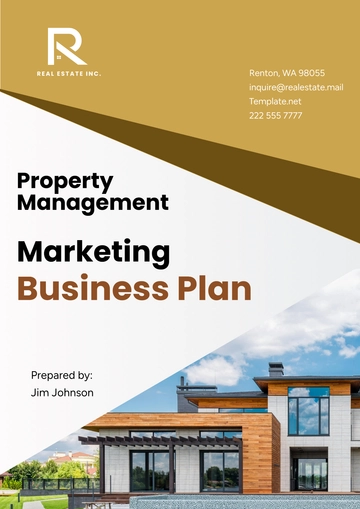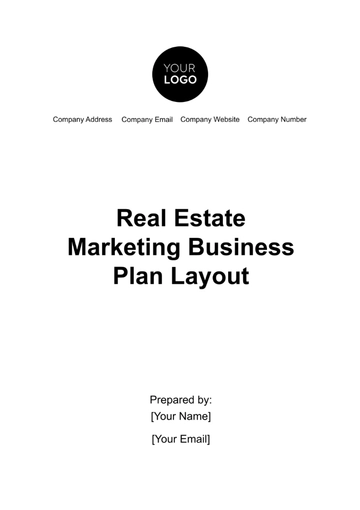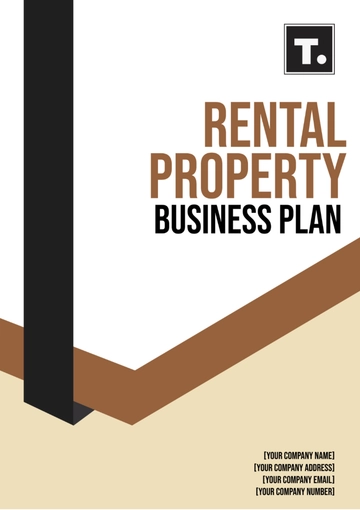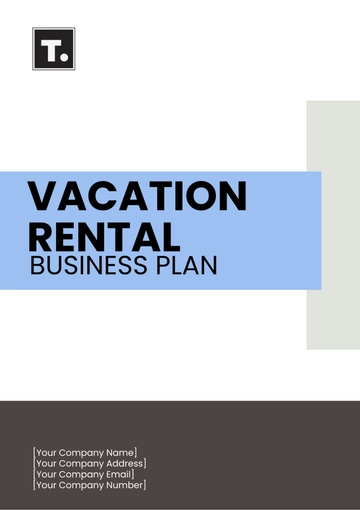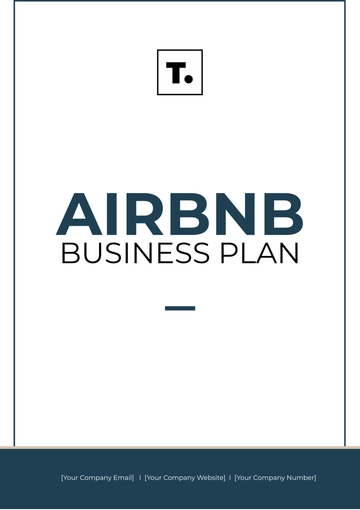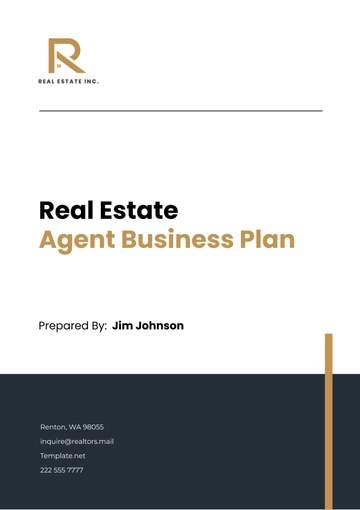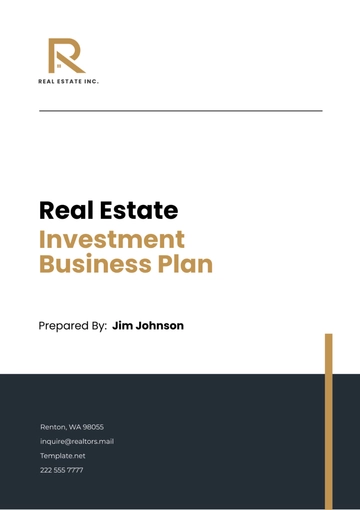Free Property Management Marketing Business Plan
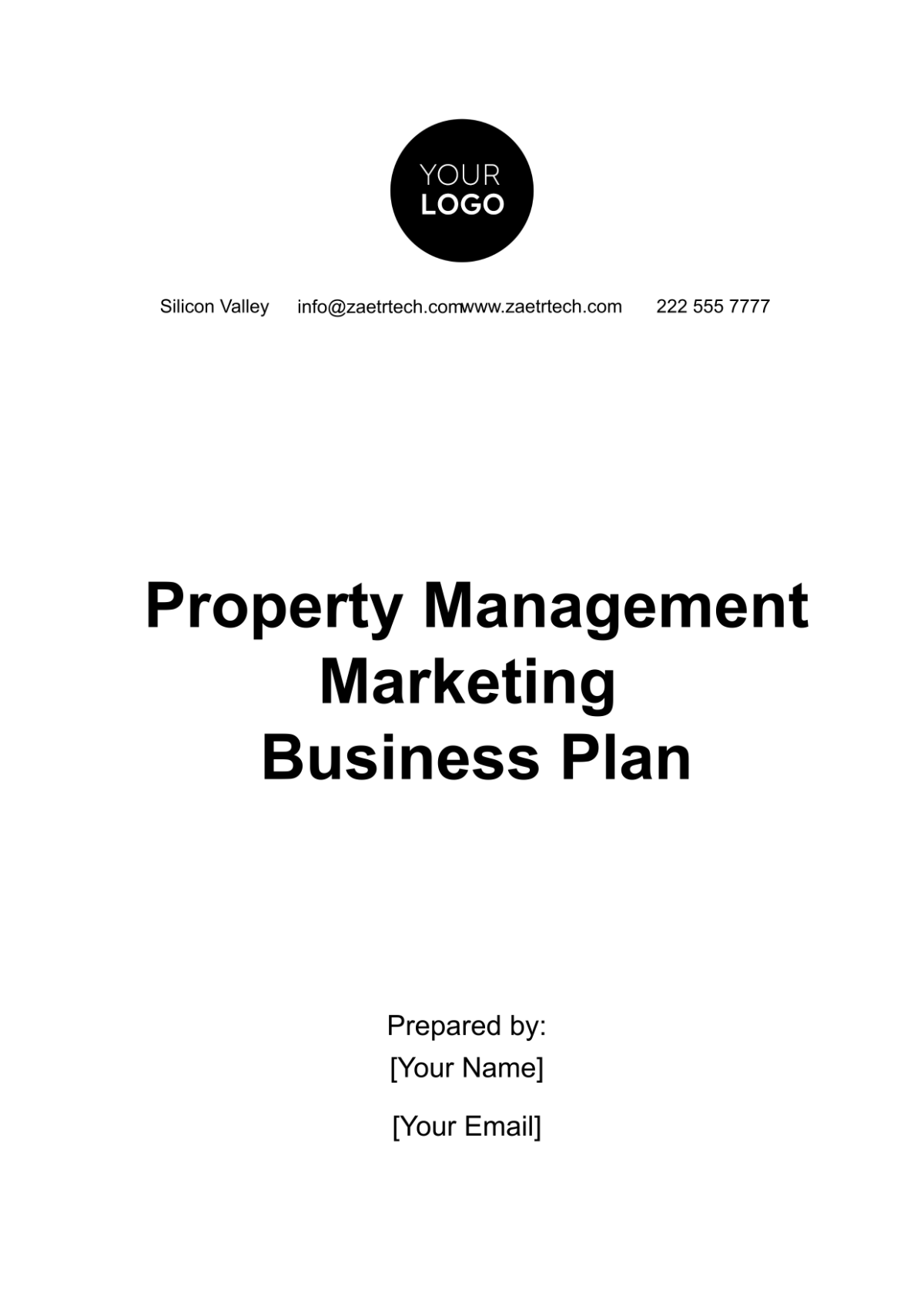
I. Executive Summary
A. Company Overview
[Your Company Name] is a full-service property management firm dedicated to providing exceptional management solutions for residential and commercial properties. Our mission is to maximize property value and ensure tenant satisfaction through innovative management practices and personalized service.
B. Business Objectives
Achieve a Market Share of [10%] in our target regions within the first three years.
Expand Service Offerings to include property maintenance and financial management by the end of the first year.
Reach a Client Satisfaction Rate of [90%] or higher through excellent service delivery and effective communication.
C. Key Strategies
Market Penetration: Utilize targeted marketing campaigns and strategic partnerships to capture a significant portion of the local property management market.
Service Differentiation: Offer comprehensive management solutions including tenant screening, maintenance, and financial reporting.
Technology Integration: Implement advanced property management software to streamline operations and enhance client experience.
D. Financial Projections
Year | Revenue | Profit |
|---|---|---|
1 | [$500,000] | [$50,000] |
2 | [$750,000] | [$100,000] |
3 | [$1,000,000] | [$150,000] |
Year 1
In the first year, we project a revenue of [$500,000]. This amount reflects the early stages of our operations, where our primary focus will be on establishing a strong client base and refining our service offerings. The projected profit for this year is [$50,000], which constitutes [10%] of the revenue. This profit margin takes into account initial operational expenses, including marketing, staff salaries, and administrative costs. Achieving this profit is vital for covering start-up costs and demonstrating the initial viability of our business model. The revenue target aligns with our objective of gaining a significant foothold in the local market and proving the effectiveness of our property management services.
Year 2
In the second year, we project a substantial increase in revenue to [$750,000]. This growth is expected as the business gains more clients, expands its portfolio, and leverages established market presence. The profit is anticipated to rise to [$100,000], or approximately [13.3%] of the revenue. This increase in profit margin reflects improved operational efficiencies, such as optimized property management processes and cost control measures. The higher profit not only indicates a healthier financial position but also supports reinvestment into the business for scaling operations, enhancing service quality, and exploring new market opportunities.
Year 3
By the third year, the business aims to reach [$1,000,000 in revenue]. This milestone represents a mature phase of operation, where the company is expected to benefit from economies of scale, established client relationships, and a strong market reputation. The projected profit of [$150,000], which is [15%] of the revenue, underscores the effectiveness of our strategic initiatives in cost management and revenue generation. This level of profitability will enable further expansion, the introduction of additional services, and potential market diversification. Meeting these financial targets will demonstrate the business’s capability to sustain growth and achieve long-term success in the competitive property management industry.
II. Company Description
A. Company History
Founded in 2050, [Your Company Name] is committed to revolutionizing property management by providing innovative solutions tailored to the needs of property owners and tenants. With a focus on personalized service and technological advancements, we aim to become a leader in the industry.
B. Mission Statement
To deliver exceptional property management services that enhance property value, ensure tenant satisfaction, and foster long-term relationships through innovation, integrity, and excellence.
C. Vision Statement
To be recognized as the most trusted and effective property management firm in our target markets, known for our commitment to service excellence and operational efficiency.
D. Core Values
Integrity: Upholding the highest standards of honesty and transparency in all our interactions.
Excellence: Striving for excellence in every aspect of our operations and service delivery.
Innovation: Embracing technological advancements to improve our services and efficiency.
Customer Focus: Prioritizing the needs and satisfaction of our clients and tenants.
III. Market Analysis
A. Industry Overview
The property management industry is experiencing steady growth driven by an increasing number of property owners and real estate investors. The market is valued at approximately [$100] billion annually and is expected to grow at a rate of [5%] per year.
Market Growth:
The property management industry is expected to experience a steady annual growth rate of [5%]. This growth rate reflects the increasing demand for property management services driven by various factors, including urbanization, population growth, and rising real estate investments. A consistent growth rate of [5%] suggests a healthy and expanding market, providing ample opportunities for our business to capture a share of this growth and achieve its strategic objectives.
Current Market Size:
As of the latest data, the current market size of the property management industry stands at [$100 billion]. This figure represents the total value of the industry, encompassing all property management services across residential, commercial, and industrial sectors. The substantial size of the current market underscores the significant potential for revenue generation and growth. Our business will aim to tap into this sizable market by offering superior property management services and differentiating ourselves from competitors.
Expected Market Size (2057):
By 2057, the property management market is projected to grow to [$127.6 billion] . This forecasted market size reflects the anticipated impact of the [5%] annual growth rate over the next several years. The increase from the current market size to the expected size demonstrates a robust and expanding market environment. This projected growth provides a favorable landscape for our business to scale operations, capture additional market share, and enhance our competitive positioning. The expected market size of [$127.6 billion] will influence our strategic planning and investment decisions, ensuring we align with industry trends and capitalize on emerging opportunities.
B. Target Market
Our target market segments include:
Residential Property Owners: Estimated at [60%] of our target market, representing a potential market value of [$60] million annually.
Commercial Property Owners: Representing [25%] of the target market, with a market value of [$25] million.
Real Estate Investors: Accounting for [10%] of the market, valued at [$10] million.
Developers and Builders: Making up [5%] of the market, with a value of [$5] million.
C. Market Trends
Rise of Remote Property Management: With [40%] of property managers adopting remote management tools.
Growing Importance of Tenant Experience: [70%] of property managers are investing in tenant experience improvements.
Increased Use of Data Analytics: [30%] of firms are integrating data analytics for decision-making.
Emphasis on Health and Safety: [60%] of properties have enhanced cleaning protocols due to the pandemic.
D. Competitive Analysis
Competitor | Strengths | Weaknesses | Market Share |
|---|---|---|---|
Competitor A | Strong brand recognition, extensive network | Higher fees, limited personalization | [20%] |
Competitor B | Advanced technology, broad service range | Lack of local market expertise | [15%] |
Competitor C | Competitive pricing, quick service | Smaller scale, limited resources | [10%] |
E. SWOT Analysis
1. Strengths
Experienced Team: Over [15] years of combined experience in property management.
Technological Integration: Utilization of advanced property management software with a [20%] increase in operational efficiency.
Strong Local Presence: Established connections with local real estate professionals and community organizations.
2. Weaknesses
Limited Brand Recognition: Currently holds [5%] market share compared to competitors with [20-25%].
Resource Constraints: Need for additional investment to scale operations and technology.
3. Opportunities
Market Growth: Targeting a market growth rate of [5%] annually, with potential expansion into new regions.
Technological Advancements: Opportunity to leverage technology to enhance service offerings and efficiency.
Partnerships: Potential partnerships with real estate agents and local businesses to drive growth.
4. Threats
Economic Fluctuations: Potential impact of economic downturns on rental demand and property values.
Regulatory Changes: Need to stay updated on evolving regulations and compliance requirements.
Intense Competition: Competition from established firms with larger market shares.
IV. Marketing Strategy
A. Brand Positioning
Our brand positioning strategy focuses on:
Exceptional Customer Service: Achieving a [90%] or higher client satisfaction rate through responsive and personalized service.
Technology Integration: Leveraging advanced property management software to streamline operations and improve client experience.
Local Expertise: Utilizing in-depth knowledge of the local market to provide tailored solutions.
B. Value Proposition
Our value proposition includes:
Comprehensive Services: Offering a full suite of property management services including tenant acquisition, lease management, and maintenance.
Transparent Pricing: Competitive pricing with an average fee of [8%] of rental income, with no hidden charges.
Expertise and Reliability: A team of professionals with over [15] years of combined experience dedicated to delivering high-quality service.
C. Marketing Mix (4Ps)
1. Product
Our property management services include:
Tenant Screening: Comprehensive background checks and credit evaluations.
Lease Administration: Management of lease agreements and renewals.
Maintenance and Repairs: Coordination of routine maintenance and emergency repairs.
Financial Management: Rent collection, budgeting, and financial reporting.
2. Price
Our pricing strategy includes:
Management Fees: Standard fee of [8%] of rental income.
Leasing Fees: [50%] of one month's rent for tenant placement.
Maintenance Fees: Passed through to the client with a [10%] administrative fee.
3. Place
Our service area includes:
Primary Cities: [City A], [City B], [City C]
Service Area Expansion: Targeting an expansion to [City D] and [City E] within [18] months.
4. Promotion
Our promotional strategy includes:
Online Advertising: [$20,000] annual budget for Google Ads and social media campaigns.
Content Marketing: [$10,000] annual budget for blog posts and articles.
Local Partnerships: Collaborations with real estate agents and community organizations.
D. Digital Marketing Plan
1. Website Development
Our website features:
User-Friendly Design: An intuitive layout with a [$15,000] investment in design and development.
Responsive Features: Mobile-friendly design to accommodate all devices.
Optimized Content: SEO-optimized content to attract and convert visitors.
2. Search Engine Optimization (SEO)
SEO strategies include:
Keyword Optimization: Targeting keywords such as "property management" and "tenant services" with an initial [$5,000] investment.
Content Creation: Developing high-quality content with a budget of [$7,000].
Backlink Building: Acquiring backlinks from industry-relevant sites with a budget of [$3,000].
3. Social Media Marketing
Our social media strategy involves:
Regular Posts: Weekly updates on Facebook, LinkedIn, and Instagram.
Targeted Advertising: [$10,000] annual budget for targeted ads on social media.
Community Engagement: Active interaction with followers and sharing industry insights.
4. Email Marketing
Our email campaigns include:
Lead Nurturing: [$2,500] annual budget for drip campaigns and client education.
Service Updates: Monthly newsletters with updates and promotions.
Special Offers: Exclusive deals and discounts to retain clients.
5. Online Advertising
Our online advertising strategy includes:
Google Ads: [$15,000] annual budget for PPC campaigns.
Social Media Ads: [$10,000] annual budget for ads on Facebook and Instagram.
Remarketing: [$5,000] budget for targeting previous website visitors.
E. Traditional Marketing Plan
1. Print Advertising
Our print advertising strategy includes:
Local Newspapers: [$8,000] annual budget for ads in regional newspapers.
Magazines: [$5,000] annual budget for ads in real estate magazines.
Flyers and Brochures: [$3,000] budget for designing and distributing promotional materials.
2. Networking and Events
We will participate in:
Industry Conferences: [$7,000] annual budget for attendance and sponsorship.
Local Business Events: [$3,000] budget for networking and community involvement.
Open Houses: Hosting property showcases with a [$2,000] annual budget.
V. Operational Plan
A. Operational Objectives
Our operational objectives focus on:
Efficiency: Streamlining processes to enhance operational efficiency and reduce costs by [15%].
Quality: Maintaining high standards of service with a goal of achieving a [90%] client satisfaction rate.
Scalability: Developing scalable processes to support a projected [20%] annual growth rate.
B. Daily Operations
Daily operations involve:
Tenant Management: Addressing tenant requests and issues with a response time of [24] hours.
Property Maintenance: Coordinating routine and emergency maintenance with a service level agreement for completion within [48] hours.
Financial Management: Managing rent collection, budgeting, and financial reporting with a monthly financial review.
C. Staffing and Management
Our staffing plan includes:
Recruitment: Hiring [5] new staff members including property managers, administrative assistants, and maintenance personnel.
Training: Investing [$10,000] annually in staff training and development programs.
Management: Implementing effective management practices with quarterly performance reviews and goal setting.
D. Technology and Systems
We will utilize:
Property Management Software: Investing [$20,000] in software for lease management, maintenance tracking, and financial reporting.
Communication Platforms: [$5,000] annual budget for client and tenant communication systems.
Data Security: Implementing robust security measures with a [$3,000] annual budget for data protection.
E. Vendor and Supplier Management
Our vendor management strategy includes:
Selection Criteria: Evaluating vendors based on quality, reliability, and cost with an emphasis on local suppliers.
Contract Management: Negotiating and managing contracts with an average annual contract value of [$50,000].
Performance Monitoring: Regularly assessing vendor performance and addressing any issues with a quarterly review process.
VI. Financial Plan
A. Revenue Model
Our revenue model includes:
Management Fees: [8%] of rental income, generating an estimated [$400,000] annually.
Leasing Fees: [50%] of one month's rent per new tenant placement, with an estimated revenue of [$75,000] annually.
Maintenance Fees: Administrative fee of [10%] on maintenance costs, generating approximately [$25,000] annually.
B. Budget and Forecasts
1. Marketing Budget
Our marketing budget allocation includes:
Expense Category | Annual Budget |
|---|---|
Online Advertising | [$20,000] |
Print Advertising | [$8,000] |
Content Creation | [$10,000] |
Events and Sponsorships | [$5,000] |
2. Operational Budget
Our operational budget covers:
Expense Category | Annual Budget |
|---|---|
Salaries and Wages | [$200,000] |
Office Rent and Utilities | [$30,000] |
Technology and Systems | [$25,000] |
Maintenance Costs | [$50,000] |
3. Capital Expenditures
Our capital expenditures include:
Expense Category | Annual Budget |
|---|---|
Office Equipment | [$15,000] |
Technology Upgrades | [$20,000] |
Property Improvements | [$30,000] |
C. Profit and Loss Statement
Our projected profit and loss statement provides an overview of our anticipated financial performance:
Revenue: [$500,000]
This figure represents the total income expected from property management services. It reflects the scale of our operations and market penetration during the initial period. Achieving this revenue target indicates successful client acquisition and service delivery.Cost of Goods Sold: [$150,000]
This amount covers the direct costs associated with delivering our property management services, such as maintenance and repairs. It is a crucial component in determining our gross profit and evaluating the efficiency of our operations.Gross Profit: [$350,000]
Calculated as revenue minus the cost of goods sold, this figure shows the profitability of our core operations before accounting for operating expenses. A gross profit of [$350,000] indicates a strong margin from our services, highlighting effective cost management.Operating Expenses: [$250,000]
These expenses include all costs necessary to run the business, such as salaries, rent, utilities, and marketing. Managing these expenses effectively is key to maintaining profitability and achieving our financial goals.Net Profit: $100,000 [100,000]
The net profit represents the final amount left after deducting operating expenses from the gross profit. This figure is crucial for assessing the overall profitability of our business and its ability to generate returns.
D. Cash Flow Statement
Our cash flow statement projects the movement of cash within the business:
Operating Cash Flow: [$120,000]
This amount represents the cash generated from core operational activities. Positive operating cash flow indicates that the business is generating sufficient cash to cover its operating expenses and support ongoing activities.Investing Cash Flow: [-$40,000]
This figure represents cash used for investing activities, such as purchasing equipment or expanding operations. A negative investing cash flow is typical during growth phases and reflects investments in future business development.Financing Cash Flow: [$30,000]
This amount reflects cash received from financing activities, such as loans or equity investments. It supports our capital needs and helps fund operational and strategic initiatives.Net Cash Flow: [$110,000]
The net cash flow is the result of operating, investing, and financing cash flows combined. A positive net cash flow of [$110,000] indicates that the business is effectively managing its cash resources and maintaining liquidity.
E. Break-Even Analysis
Our break-even analysis determines the level of sales required to cover all fixed and variable costs:
Fixed Costs: [$250,000]
These are costs that do not vary with production volume, such as rent and salaries. Knowing our fixed costs helps in calculating the total amount of sales needed to break even.Variable Costs per Unit: [$50]
This represents the cost incurred for each additional unit of service provided. Understanding variable costs per unit is essential for pricing and profitability analysis.Break-Even Point (Units): [5,000 units]
This figure shows the number of units needed to be sold to cover all fixed and variable costs. Reaching this break-even point ensures that the business covers all costs and begins generating profit.Break-Even Point (Revenue): [$400,000]
This is the revenue required to cover all fixed and variable costs. Achieving this revenue level signifies that the business has reached the break-even point and starts to contribute to profit.
F. Funding Requirements
Our funding requirements detail the capital needed for different phases of business development:
Initial Capital: [$100,000]
This amount is required for start-up costs and initial operations, including equipment, marketing, and initial staffing. Securing this capital is crucial for launching the business and covering early expenses.Growth Capital: [$150,000]
This funding is needed for expansion and development of new services. It supports strategic growth initiatives and helps enhance service offerings and operational capacity.
G. Financial Projections and Metrics
Our financial projections and metrics provide an outlook on growth and performance:
Revenue Growth: Annual increase [20%]
We anticipate a [20%] annual increase in revenue, reflecting our strategic growth plans and market expansion efforts. This growth rate aligns with our objectives for scaling operations and increasing market share.Profit Margins: Improvement [20%]
We project a [20%] improvement in profit margins, indicating enhanced efficiency and cost management. This improvement will contribute to higher profitability and better financial health.Return on Investment (ROI): [15%]
Our ROI projection of [15%] measures the expected return on investments made in the business. A [15%] ROI demonstrates the effectiveness of our investments in generating profitable returns.
VII. Implementation Plan
A. Timeline and Milestones
Our implementation timeline includes:
Milestone | Target Date |
|---|---|
Launch Marketing Campaign | 01/2050 |
Complete Website Development | 03/2050 |
Secure First 10 Clients | 06/2050 |
Expand Service Area | 12/2050 |
Achieve Profitability | 12/2050 |
B. Action Plan
Our action plan includes:
Develop Marketing Materials: Create brochures, flyers, and online content by Q1 2050.
Launch Digital Marketing Campaign: Implement SEO, social media, and online ads by Q2 2050.
Initiate Networking Efforts: Attend industry events and build partnerships by Q3 2050.
Monitor and Adjust Strategies: Evaluate performance and adjust strategies as needed starting Q4 2050.
C. Responsibility Matrix
Our responsibility matrix assigns:
Task | Responsible Person |
|---|---|
Marketing Campaign Development | Marketing Manager |
Website Design and Launch | IT Specialist |
Client Acquisition | Sales Team |
Financial Reporting | CFO |
D. Risk Management
1. Risk Identification
Identified risks include:
Market Fluctuations: Potential changes in the real estate market affecting demand.
Regulatory Changes: New regulations impacting property management practices.
Operational Challenges: Staffing, technology, or vendor issues.
2. Risk Mitigation Strategies
Mitigation strategies include:
Market Research: Regular updates to market analysis to anticipate and respond to changes.
Compliance Monitoring: Stay informed about regulatory changes and ensure compliance.
Contingency Planning: Develop plans for operational challenges and disruptions.
E. Evaluation and Monitoring
Our evaluation and monitoring plan includes:
Performance Reviews: Quarterly reviews of financial and operational performance.
Client Feedback: Regular collection and analysis of client feedback to identify areas for improvement.
Adjustments: Make necessary adjustments to strategies based on performance data and market conditions.
- 100% Customizable, free editor
- Access 1 Million+ Templates, photo’s & graphics
- Download or share as a template
- Click and replace photos, graphics, text, backgrounds
- Resize, crop, AI write & more
- Access advanced editor
Optimize your property management strategies with the Property Management Marketing Business Plan Template from Template.net. This editable and customizable template offers a detailed framework for marketing property management services. Use our Ai Editor Tool to tailor the plan to your business, enhancing your marketing efforts and achieving your property management goals.
You may also like
- One Page Business Plan
- Coffee Shop Business Plan
- Restaurant Business Plan
- Food Business Plan
- Real Estate Business Plan
- Executive Summary Business Plan
- Cover Page Business Plan
- Nonprofit Business Plan
- Daycare Business Plan
- Construction Business Plan
- Startup Business Plan
- Medical Business Plan
- Bakery Business Plan
- Service Plan
- Hotel Business Plan
- Catering Business Plan
- School Business Plan
- Healthcare Business Plan
- Transportation Plan
- Sports Plan
- Car Wash Business Plan
- Salon Business Plan
- Clothing Business Plan
- Farming Business Plan
- Boutique Plan

